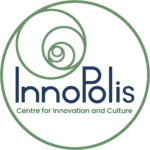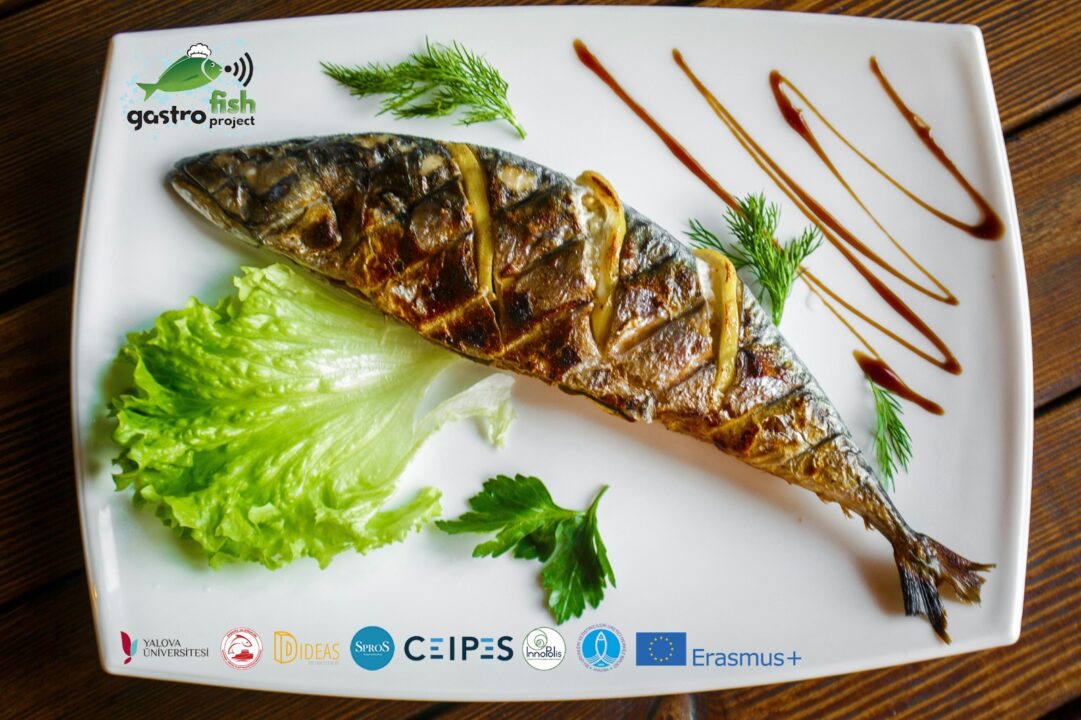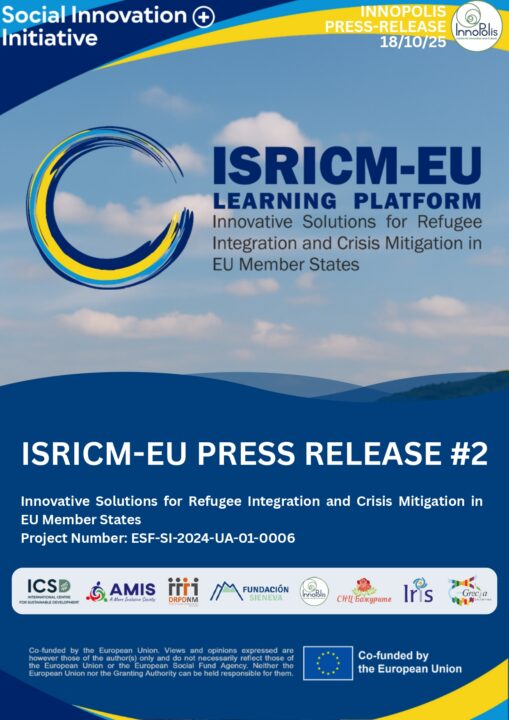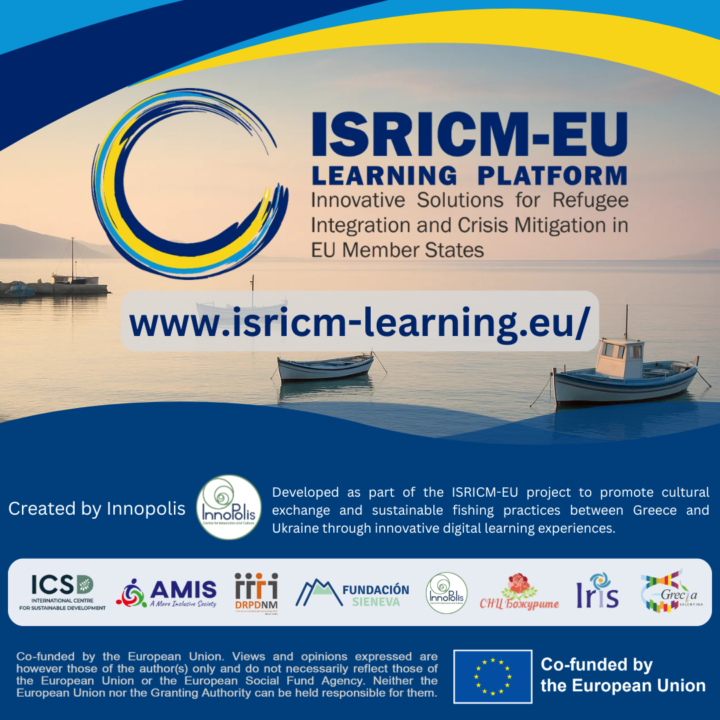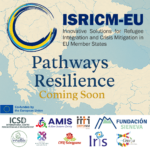
InnoPolis is on the move! ISRICM-EU Progress!
23 August 2025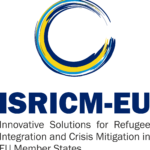
ISRICM-EU PRESS RELEASE 1
25 August 2025Heritage as a Bridge: Connecting Cross-Border Regions with the Ukrainian Refugee Experience
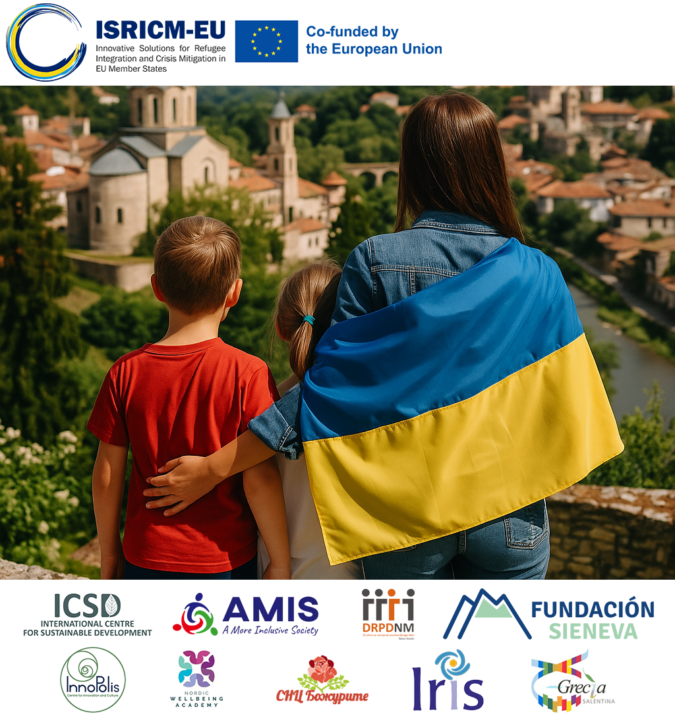
The war in Ukraine has displaced millions of people, forcing them to leave behind homes, communities, and a sense of stability. Yet in this profound crisis, culture and heritage can serve as bridges — connecting refugees with host communities, offering pathways of belonging, and fostering resilience. Within the framework of the ISRICM-EU project – Innovative Solutions for Refugee Integration and Crisis Mitigation in EU Member States, InnoPolis is working with partners across Europe to design a cultural itinerary that reflects shared traditions, natural heritage, and collective stories of resilience.
Cross-Border Heritage: A Shared Landscape
The cross-border regions of Greece, Bulgaria, Romania, and Ukraine are rich with cultural and natural treasures. From the monasteries of Thessaloniki to the vibrant traditions of Plovdiv, and the multi-ethnic layers of Chernivtsi, these regions share centuries of interwoven histories.
Natural landscapes, rivers, mountains, and fertile valleys have long shaped the rhythms of life and fostered connections between communities across borders. These cultural and natural assets are not just historical relics; they are living resources for dialogue, creativity, and cooperation.
Refugee Heritage and Storytelling
For many Ukrainian refugees, displacement also means the loss of familiar places, traditions, and social networks. However, through cultural tourism and storytelling, their personal heritage can find resonance within host communities.
The “Pathways of Resilience” itinerary being developed under this project aims to highlight stories of migration, faith, and resilience — showing how Orthodox traditions, refugee narratives, and local customs intertwine. By integrating refugee voices into the narrative, the itinerary transforms from a simple tourism route into a platform for cultural dialogue and empathy.
Integration Through Heritage Tourism
Heritage tourism is not only about visiting monuments. It is about understanding identities and fostering connections. By engaging local communities, refugees, NGOs, and cultural institutions, the itinerary becomes a tool for social inclusion:
- Refugees can contribute by sharing stories, skills, and traditions.
- Local stakeholders gain visibility and recognition for their cultural assets.
- Host communities benefit from new spaces of dialogue, where diversity is celebrated rather than feared.
Through guided visits, storytelling sessions, and cross-cultural exchanges, the itinerary promotes integration not as assimilation, but as participation — where refugees and host societies co-create new shared experiences.
Building Resilient Communities
The ISRICM-EU project is not only about mitigating the immediate consequences of the refugee crisis but also about building long-term resilience. By linking cultural and natural heritage with refugee experiences, the Pathways of Resilience itinerary demonstrates how social innovation and heritage tourism can go hand in hand.
It reflects a vision where heritage is not just the past we inherit, but the future we build together — inclusive, diverse, and rooted in solidarity.
Co-funded by the European Union through the European Social Fund Plus (ESF+) Social Innovation+ Initiative.
Co-funded by the European Union. Views and opinions expressed are however those of the author(s) only and do not necessarily reflect those of the European Union or the European Social Fund Agency. Neither the European Union nor the Granting Authority can be held responsible for them.
